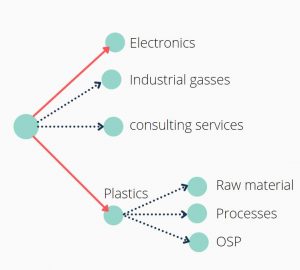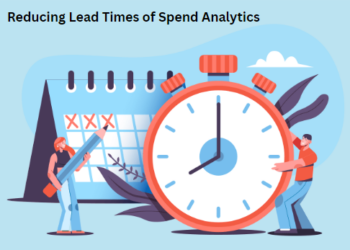53% of procurement organizations developed their own spend taxonomy, here is why.
Spend data usually comes with thousands or millions of transactions with different formats and attributes. Labeling or classifying spend data is one of the ways to structure the ocean of data and get them ready for insight generation. The spend classes and their relationships are referred to as spend taxonomy: a hierarchical structure that can be used to slice and dice all transactions and generate different overviews as the foundation for inside generation and execution.
Spend taxonomy is the foundation and an enabler for spend analysis at any level.
The primary questions procurement and supply chain professionals face are:
- Where to start? As there is spend existing for many many years, how to choose the baseline of spend analysis?
- What are the best practices? How to do spend analysis in a timely manner and prevent the project to take years before yielding results?
Here is our tip for you based on our experience going through and having seen many companies as well as best practices from the likes of Gartner.
Define the purpose of taxonomy for your organization
This is potentially the most critical part. Several factors are key for this decision. For example, is your company/business forcing you to exchange or share your spend sources together? Usually, companies in logistics are in that box. If that’s the case you should be thinking of a highly standardized taxonomy for your business so as a result you can easily compare/ share your spend analysis with other partners, competitors, suppliers in your industry.
There are several standardized schemes out there which most popular ones are UNSPSC and eCI@ss. These are created with the same exact goal – the ability to compare and share spend.
However, if your business going to utilize spend analysis only internally (most businesses falling into this box) then the purpose of having the taxonomy is to truly represent your products/services and as well products and services that your current supplier base serves today. In this scenario, you will have your own tailor-made spend taxonomy which has tremendous advantages over standard schemes but as well needs time investment from the firm.
Owned taxonomies as mentioned are sourced based. They are tuned on complexity as well as criticality and volume of business by experts working in your business for many years (usually within strategic sourcing group but sometimes other close functions like Advanced Operations (AO) or R&D group). No wonder spend analysis fueled by owned taxonomy can provide much deeper descriptive and prescriptive analysis which is understood and respected by the business.
In both cases, taxonomy acts as a fingerprint for spend analysis, except for a minority of business (as mentioned above) the more specific to your business and businesses of your suppliers the higher potential value to be captured by spend analysis.

Find a baseline aligned with the purpose
At first, this is going to be overwhelming in case there are no taxonomies in place. If that’s the case, our suggestion is to start utilizing one of the standard schemes (like UNSPSC) and start tweaking them toward your sourced products or services. This will be taking the burden off your teams initially and will be helping them to structurally scope and initiate tuning the spend tree. It is highly recommended to assign this responsibility to a team/group in the organization so all efforts can be coordinated and protected without any losses.
The process of tweaking and getting into your organization’s spend signature could be lengthy and require a broad range of people with different expertise to share their years of knowledge each in a specific domain. Therefore, the continuity of this activity and leadership support is most essential (you can read our other blog on this topic “Continuous value generation with spend analysis”
Pick a software tool to allocate taxonomy to spend transactions
Previous steps are meant to draw a picture on your particular spend profile. Logically next step is to allocate your spend transactions into boxes you created (your spend taxonomy). This is fairly easy to do if you have very limited products or services as well as have vendors. But for most companies with hundreds and thousands of products and vendors and daily new transactions, spend transaction allocation turns into a complicated operation. Therefore, you would like to decide and evaluate this decision every couple of years right from the beginning.
If you fall under the first group, you probably need a spend repository and will be able to manage the allocation of spend transactions with simple rule-based (IF/Then) formula in excel. However, if you fall under the second group utilizing a solution to manage this centrally is no question. At Mithra-AI we are passionate and driven to facilitate this in a novel way not only for bigger companies but for smaller sizes and even individuals responsible for a spend portfolio.
Turbocharge Category Strategy Execution
Turbocharge your category strategy execution & drive continuous business value Category owners invest significant time in stakeholder engagement, in data...
Rewiring Spend Analytics
Rewiring Spend Analytics - the New Era Procurement has more than ever to gain from advances in technology—and more to...






